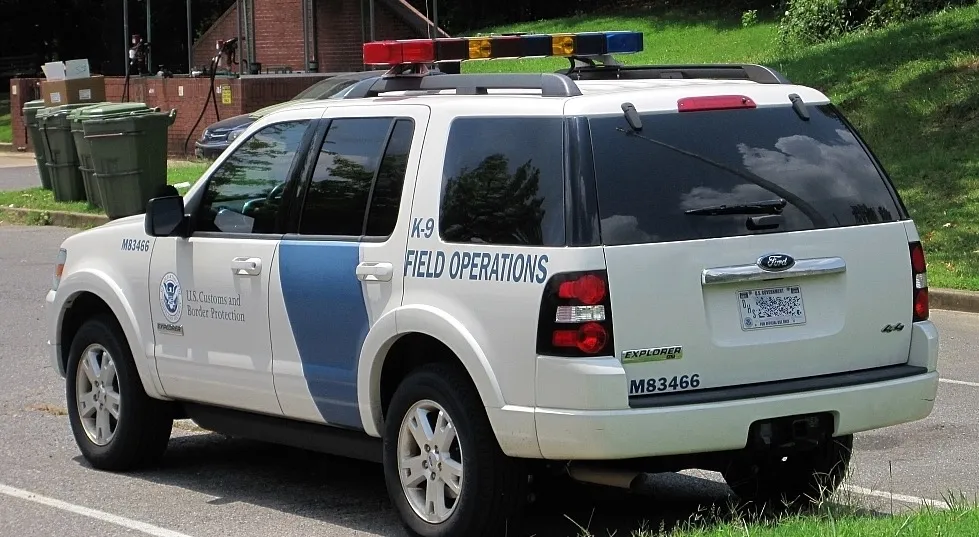Student sightings of a U.S. Border Patrol vehicle at the Oval Monday afternoon set in motion a wave of concern for the safety of undocumented students and workers on campus. The reason for the vehicle’s appearance on campus remains unclear, though no students or workers are known to have interacted with Border Patrol agents thus far.
News of the vehicle sighting spread quickly. A widely circulated email, sent to the Diaspora listserv, all RAs on campus and multiple individual dorm listservs, stated that Immigrations and Customs Enforcement (ICE) agents had been spotted on campus. However, eyewitness Sreeram Venkatarao ’21 said that the car in fact was emblazoned with “US Customs and Border Protection,” indicating that it was a Border Patrol vehicle instead.
Though ICE and Border Patrol are both agencies that enforce US immigration policy, ICE is tasked with carrying out deportations. Border Patrol, meanwhile, aims to prevent unauthorized entry at or near the border.
Stanford University Department of Public Safety (SUDPS) spokesperson Bill Larson also said that the van was likely affiliated with Border Patrol rather than ICE, though he was unable to confirm. He said that Border Patrol agents may have been on campus to meet with administrators or assist international students with visas. As of about 6:00 p.m. Monday, Larson said that the vehicle had left campus.
“I immediately found out about it from my dorm group chat, because I live in Casa Zapata, and there was a lot of concern,” said Associated Students of Stanford University (ASSU) Senator Rodolfo Salazar ’21.
“Everyone is trying to spread information about what to do if there is an incident of someone being pulled over or questioned,” Salazar continued, referencing Border Patrol’s practice of verifying immigration status during vehicle stops.
Salazar said that he promptly reached out to President Marc Tessier-Lavigne to see if he knew Border Patrol was on campus. Megan Pierson ’82, chief of staff to Tessier-Lavigne, told Salazar that while the president was traveling on business, she and her colleagues were “looking into the matter.”
In an email to The Daily, University spokesperson E.J. Miranda reiterated Pierson’s statement, writing that the University has “no information on this matter but [is] in the process of looking into it.”
“So far, it just seems like none of the administrators knew what was going on,” Salazar said. “There is general concern about student safety on campus … If Border Patrol is able to come on campus without informing any administrators, where is the line drawn in regard to who can actually come on campus?”
Stanford does not list a specific policy regarding whether or not immigration enforcement agents are allowed to come onto campus on their websites that outline resources for undocumented students, though the university “does not inquire about immigration status in the normal course of its duties” and “will not participate with other agencies in immigration enforcement activities unless legally required to do so.”
According to Salazar, residents of Casa Zapata also tried to reach out to the staff in Stern Dining to see if they could notify other R&DE employees of the Border Patrol sighting, worrying that they or their family members might be undocumented and at risk of legal consequences.
“I think it’s important to make everyone on Stanford’s campus aware of their presence, even if we’re not entirely sure about who was here and why they are here, just to make sure that everyone is protected,” Salazar said.
Since the election of President Trump two years ago, activists at Stanford have been attempting to make Stanford a “sanctuary campus,” urging the administration to put in place policies to protect undocumented students and workers from federal immigration enforcement. While President Tessier-Lavigne declined to label Stanford as a sanctuary campus in February 2017, the administration pledged to keep students’ and workers’ records private and connect students in need of legal support with the resources they need.
“The university continues to be committed to the safety and wellbeing of everyone in our community, of all backgrounds and immigration status,” Miranda wrote to The Daily.
Contact Katie Keller at ktkeller ‘at’ stanford.edu.
